1
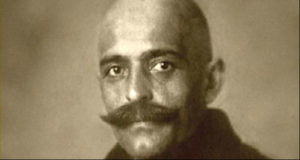 The supervising nurse who hired me to work at the psychiatric clinic had a passive essence. Her name was Marge, and she didn’t stand out in a room of people. She was short, probably an inch or two above five feet. At the time that I worked at the clinic, she was in her early thirties. She had an oval face, fair skin, fine hair, and a short boyish-looking haircut. Visitors seldom guessed that she was in charge. But she wasn’t naïve.
The supervising nurse who hired me to work at the psychiatric clinic had a passive essence. Her name was Marge, and she didn’t stand out in a room of people. She was short, probably an inch or two above five feet. At the time that I worked at the clinic, she was in her early thirties. She had an oval face, fair skin, fine hair, and a short boyish-looking haircut. Visitors seldom guessed that she was in charge. But she wasn’t naïve.
I learned something about the way she worked the first time I was called on to restrain a patient, which happened in my first week.
It began with a phone call from the medical side of the hospital asking for ‘psychiatric assistance’ in the emergency room. Marge took the call. She went herself and took me along for support. We didn’t know what to expect—they hadn’t told her anything over the phone—still, when we arrived, we were a little surprised to find two young nurses and a potbellied policeman standing impassively outside of a woman’s lavatory. The three of them seemed bewildered and just stared at us. Finally, one of the nurses explained that a woman, brought to the hospital by the policeman, had barricaded herself inside the bathroom.
I was new, so I just followed Marge’s lead. At first, we called to the woman and tried to coax her out, but that didn’t work. The woman just shouted obscenities at us. Then we attempted to push our way in, but the woman was somehow blocking the door. So we tried more coaxing, which went on for another fifteen minutes. We tried every argument and promise and lie we could think of, but the woman only became more obscene. Among other things, she accused us of wanting to rape her.
After twenty minutes Marge decided that we weren’t getting anywhere and went to a phone and called our activity therapist, Paul. Paul was a handsome, balding man who was six feet four and very athletic. Generally he was good-natured, but when he was opposed, he could be very dominating. His job required him to organize games and therapeutic exercises for the patients, and his commanding voice and height served him well in this role.
On the ward it was known that Paul and Marge were in a relationship. They tried to keep their romance a secret, but it got out when one of the nurses started asking questions when she noticed Marge take Paul’s hand after a staff meeting.
Paul came directly from the clinic and arrived after only a few minutes. After Marge explained what she needed, he said with incredulity, “You called me to help you get a woman out of a lavatory?”
“Be nice,” she said. “I’m your boss, and I want you to help Bill escort this woman to the ward.”
Once he understood the situation he took charge. He asked me to stand at the door with him and then yelled, “Move away from the door, we’re coming in,” as if he were a general barking orders to his men.
“Bastards,” she shouted back at him, “if you’re coming in, you’d better be armed.” But she stood back, and let Paul push the door open. I followed him in.
Once we were inside, we were confronted with a woman standing with her back to a long washbasin and mirror. She was stout, not very tall, and not young anymore. Her clothes were in disarray, as if someone else had dressed her. Her skirt, which was green, was turned around and her blouse, a kind of rust color, was misbuttoned. Her face was brilliantly red, and her eyes bulged. She stood examining us, waiting for us to make the next move.
Paul said, “This is Bill, and I’m Paul.”
“Bastards,” she said. “I know what you’re after.”
“We’re going to take you to a private room in another wing of the hospital,” Paul said calmly but with force.
“Is that where you’re going to do it?”
“We’re not going to do anything to you. We’re here to escort you down the hall to another room.”
“Well, I’m not stopping you, am I?”
So Paul held open the door so that she could exit the lavatory; then, with Paul at one arm and me at the other, we escorted her down a corridor toward the clinic. Marge led the way. We had guided her about halfway to the ward when the policeman, who hadn’t initially thought to tag along, suddenly ran up behind us. When the woman turned and saw him, she began to scream and to lash out at me and Paul. Then all hell broke loose. The patient hit us with her fists, kicked us, and even tried to bite Paul, all the time screaming that we were trying to rape her. At one point she managed to kick the policeman in the stomach, which sent the bullets from his belt flying all over the hallway. Patients appeared at the doors to their rooms to see what the commotion was all about, and a doctor came running up the hall to add to the confusion.
It was quite a scene: three men trying to subdue a woman, while another man and a woman watched. In the end the three of us, plus the doctor, carried the woman bodily onto the ward.
We took her directly to a padded cell, which we referred to as ‘the quiet room.’ This cell was a square of about ten feet by ten feet, and it had a thick carpet on the floor that extended halfway up the walls. It had no furniture except one bare mattress. On the wall that faced the street, there was a Plexiglas window overlaid with thick, crisscrossed wire. The heavy wooden door also had a little, unbreakable window. In the ceiling there was an unexposed light, a hidden television camera, and an intercom system.
During my orientation, Marge had explained to me that in some institutions isolation was used as a punishment. “But we’re not going to do that here,” she said. “We’re only going to use this room when patients are violent or out of control.”
Then she showed me a small TV in the office next door.
“Legally,” she explained, “if a patient is confined, we have to make a notation in their chart every twenty minutes. So someone will sit in here and watch, but I don’t want the patients to know that they were being observed. I’d also prefer it if we can avoid using the intercom system, or at least use it with discrimination. Some patients might think they’re hallucinating if a voice suddenly speaks to them from the ceiling. Besides, I’ve seen this arrangement before, and patients, once they know they can be heard, almost always want to argue.”
As far as I remember this was the first time we used the room. When we dumped the woman on the mattress, she looked up at Paul and yelled, “So this is it, is it? I knew it was going to come to this! What are you waiting for? There are four of you, aren’t there? I suppose you think you need the other three to hold me down…”
She continued to yell long after we locked the door. She spent three days in the quiet room. The whole time the ceiling camera was turned on and she was monitored in the next room by someone on staff. The first two days she masturbated repeatedly.
She was my first exposure to bipolar disorder (we called it manic-depression at the time). With the help of a drug called Haldol, the strongest sedative the psychiatrist prescribed, she finally slept on the third day and passed from the manic phase of her illness to the depressed phase. Altogether she spent five weeks on the ward. And after her abrupt and violent admission, it surprised me that she turned out to be a rather shy and self-effacing woman.
2
I saw maybe twenty cases of bipolar disorder in the next two years. At first this disorder confused me because the symptoms were quite varied. Some patients were explosive, like the case I just described, others were cheerful and talked continuously, others hardly spoke, others were paranoid, and others were grandiose. It took me a little while to understand that bipolar was an energetic disorder and that the manic phase simply amplified the weaknesses and personality flaws of each individual patient.
I understood this only after I began to think about bipolar in the framework of Gurdjieff’s model of accumulators. The idea is that there is a large accumulator, where there is an enormous amount of stored energy that is usually unavailable to us, indicated to me that in some circumstances it would be possible for someone to access that energy unconsciously; that is, without the long preparation of mastering self-remembering and the transformation of negative emotions.
Ouspensky seems to suggest that this is possible. In The Fourth Way he says: In ordinary life this connection with the big accumulator sometimes happens in extraordinary circumstances, such as moments of extreme danger.
But I think it is more common than either Ouspensky or Gurdjieff indicated. Gurdjieff explains that there are ‘some dangers’ in accessing the large accumulator, but the only one he speaks about in In Search of the Miraculous is the possibility of an individual connecting to the large accumulator and exhausting its energy and then dying.
There comes a moment when the large accumulator is drained of all energy and the organism dies. But this happens very seldom. Usually the organism automatically stops working long before this. Special conditions are necessary to cause the organism to die exhausted of all its energy. In ordinary conditions a man will fall asleep or he will faint or he will develop some internal complication which will stop the work a long time before the real danger. ~ Gurdjieff
3
If we are going to understand how this system of energy storage and release can malfunction, then we first must understand how it functions in normal circumstances.
The first thing that we have to understand about accumulators is that they are psychic, that is, not physical. We cannot find them by dissecting the body. Like the centers that they serve, they are made up of a material that is too fine to be detected by the physical eyes. In the same way that the system of chakras, which originated in the esoteric Vedic tradition, is a system of non-physical energy flow, so too Gurdjieff’s food diagram is a description of how physical and non-physical ‘hydrogens’ are transformed from lower to higher ‘material.’ The food diagram explains how energy enters through food, air, and impressions and then flows through the body and is transformed into our daily energy. Gurdjieff’s model is mechanical; that is, it describes the inner workings, or mechanics, of how food, air, and impressions are changed into something that is usable by man’s lower and higher bodies. The analogy Gurdjieff uses is of a chemical factory and of energy being stored in accumulators or batteries. (If Ouspensky had settled in America rather than England, he probably would have called accumulators batteries.) This model of a system of small accumulators that feed from a large accumulator is in keeping with Gurdjieff’s view that man is machinelike. When this system works correctly the large accumulator collects and stores energy from food, air, and impressions, and then the energy is released into the small accumulators for use by the functions.
In an ordinary state of consciousness (the second state) the release of energy from the large accumulator to small accumulators is monitored, and to a great extent controlled, by the intellectual part of the instinctive brain. This is the part of us that is primarily concerned with our survival. It is the part of us that keeps us from walking in front of a moving car or from poisoning ourselves. To a large extent this explains why ordinarily we have so little control over the energy in the large accumulator. In the second state the intellectual part of the instinctive center is difficult to observe, let alone control. It is only when we reach the third state that we can begin to have some observations about how this part functions.
In the state of self-consciousness or approaching it, one can come into contact with the intellectual part of the instinctive centre and learn a great deal from it concerning the functioning of the machine and its possibilities. The intellectual part of the instinctive centre is the mind behind all the work of the organism, a mind quite different from the intellectual mind. ~ P. D. Ouspensky
So again, we come back to one of the basic principles of the fourth way: that higher understanding and ‘doing’ are dependent on higher centers. This is why all work in the fourth way is centered around self-remembering and the transformation of suffering and negative emotions. In the food diagram this principle is explained by the introduction of the two conscious shocks. Besides these two conscious shocks there is one mechanical shock that the machine produces at the beginning of the air octave. This shock moves the food octave along so that it creates a small amount of higher hydrogens or si 12. (Si refers to the note’s place in the octave; in this case, it’s the last note. And the 12 refers to the level of energy, or the rate of the vibrations of the energy.) Generally, this mechanically produced hydrogen 12 can be observed as sex energy.
The first conscious shock is self-remembering at the moment an impression enters. Without self-remembering the impressions octave does not progress; it stops at the first note, do. With self-remembering impressions enter deeper into us and the first two notes of the impressions octave, re 24 and mi 12, sound. The experience of mi 12 can be thought about simply as the feeling of being in the moment. It is the perception of being present and feeling the passage of time and seeing the movement of the world around us.
The second conscious shock is described by Gurdjieff in this way:
The effort which creates this ‘shock’ must consist in work on the emotions, in the transformation and transmutation of the emotions. This transmutation of the emotions will then help the transmutation of si 12 in the human organism. No serious growth, that is, no growth of higher bodies within the organism, is possible without this transmutation. ~ Gurdjieff (from In Search of the Miraculous)
What this means is the capacity to catch and transform negative emotions before they are expressed. You can see why self-remembering is needed as the first shock. Without self-remembering there is only a rudimentary awareness of what is going on in our inner world. Even with self-remembering, the transmutation of the emotions is not a given. It is a special effort in itself, but it is made easier by the understanding or perception that is possible when mi 12 circulates in the body. A simple example of a perception of this kind would be the insight that I am many ‘I’s,’ but that ‘I’ can remain separate from those ‘I’s.’ In other words, if I understand that the part of me that wants to be negative is not me, it will be more possible for me to see these ‘I’s’ from a larger perspective and to transform them; certainly it will be more possible than if I believe that I am my thoughts and emotions.
There is an attraction for many students of Gurdjieff’s teaching to concentrate on trying to increase and transform sex energy, and though there is the possibility of real energy from this source, the concentration for the transformation of sex energy, si 12, must be focused on the transmutation of the emotions. The second conscious shock transforms, or moves along, both the energy generated from self remembering and the energy stored in the sex center.
If we know its nature and can produce the second conscious shock, mi 12 will develop into fa 6 and si 12 into do 6. ~ P. D Ouspensky
If you think about it a little, you will see that the design of the machine, from the point of view of an evolving being, is remarkably clever. The first conscious shock is a very simple effort. We all can begin to self-remember at any moment. There is no preparation required. But the second conscious shock requires a foundation of inner work; it requires, in fact, everything we learn about ourselves by trying to be present. All the lessons of self-remembering, and all the observations taken away from being present are the material needed for the second conscious shock. But it can also be said that the second conscious shock gives the energetic focus needed to advance self-remembering. So, in a real way, they need not be sequential.
The arrangement of the two conscious shocks also explains why certain popular spiritual teachings and certain religious traditions are incomplete as teachings of conscious evolution.
There a considerable number of books published in recent times on being present. The main attraction to the systems created by the authors of these books was that they were simple. Illumination according to these authors is a basic self-knowledge brought about by taking a little time each day to be present. They had found the power of the first conscious shock and decided that that was enough.
At the other extreme we have a mix of traditional religions that are based on morality. Almost all rules or commandments that are part of the moral side of religion were, at one time, exercises designed to help students of that tradition begin work on the transmutation of the emotions. They were exercises that taught the student how to master the second conscious shock. But without the long practice of self-remembering, morality leads to hypocritical behavior, judgment of others, and even hatred and violence. In other words, it becomes its opposite: instead of teaching how to transform lower emotions into a higher energy, it allows people to justify and express the lowest parts of their being.
Any true system of conscious evolution must contain knowledge and practices that work on both conscious shocks. Teachings with knowledge of one or the other shocks without the other will eventually lose focus and become distorted.
4
We cannot have a complete picture of the energy systems of man without first trying to understand normal sleep, the first state. Sleep at night is the result of a disconnection between the lower centers. The centers still function, but they do not connect with each other. Sleeplessness is the result of being unable to break the connection between two centers. A common example of this is when we have an unresolved emotional issue that we cannot stop thinking about. What this means is that the emotional center is upset or angry or depressed and that it is using the intellectual center to try to resolve its issues. The insomnia is created not by the anger or the depression, but by our inability to transform the emotions and disconnect what we feel from our thoughts.
A nap in the afternoon is sometimes refreshing because it disconnects our centers, and in a sense resets the machine. Connections between centers can be based on intelligence and intentionality, or they can be based on imagination and identification. The connections we create (or allow) between centers are a good indication of our inner work. Depression, for example, is sometimes just a habit of allowing certain bad emotional attitudes to connect to the intellectual center and then allowing the mind to replay negative thoughts about our situation over and over again. The longer a pathway is used, the more permanent it becomes; so that eventually it seems to us that this one negative attitude is the only way of looking at a particular difficulty. In order to create a new pathway between the emotional center and the intellectual center, the mind needs to stand on its own and choose an attitude based on a larger perspective. In other words, we need to return to our verifications; that is, what we have understood when we were connected to higher centers.
The danger of mechanical connections between centers, particularly between the emotional center and the intellectual center, is that they can become obsessive, so that eventually it becomes difficult for the machine to fall asleep at night. If these connections are not broken—in psychiatry they are broken by the use of drugs—at some point the energy in the small accumulators is used up, and energy is sent directly to lower centers from the large accumulator. Psychologically an ordinary man is not prepared for such an intense flow of energy, and the resulting manifestations (symptoms) are what we call the manic phase of bipolar disorder.
This, of course, is just one scenario. There are many. For example, Ouspensky suggested that certain diseases, especially in their later stages, can connect the patient directly to the large accumulator. I saw this once at the hospital where I worked; a man dying of emphysema, suddenly had an enormous amount of energy. Of course, in cases like this it means that the machine is tapping into its last resource of energy, and that death is not far away. Also I believe that certain traumatic events create a pathway to the large accumulator that is reopened in episodes of post-traumatic stress disorder. This explains why soldiers, for instance, are more likely to suffer from bipolar disorder.
I personally went about two weeks without sleeping, or hardly sleeping, after I suffered a concussion, which apparently brought up some old traumas. Every time I started to fall asleep, my body would jump, as if it were protecting me from falling asleep because of an imminent danger.
Gurdjieff after his automobile accident suffered from sleeplessness, which seems to have reached its worst point in 1927, when for two or three weeks he slept no more than one hour a night. This what he says about it.
The fundamental cause of such sleeplessness and general disorder, of nearly all the important functions of my organism, was the uninterrupted flowing in my consciousness of ‘heavy’ thoughts about the apparently insoluble situation which had unexpectedly arisen for me. (Prologue, Third Series)
Essentially what he is saying is that he was experiencing wrong work of centers (general disorder, of nearly all the important functions of my organism) and that he couldn’t break the connection between his intellectual brain and the emotional and instinctive/moving brains (uninterrupted flowing in my consciousness of ‘heavy’ thoughts).
I thought at one time that it was possible to damage or warp the large accumulator, and though this may be possible, I have no real understanding of how that would work. I think it’s more likely that people who suffer from bi-polar disorder have accidentally created pathways that connect lower centers directly to the large accumulator. In my experience the profile of a person suffering from bipolar almost always includes either a tendency toward extreme behavior or an addiction to energy or both. These personality traits help create the conditions that foster the manic state and are likely to be factors that keep the person in the cycle.
5
In In Search of the Miraculous Gurdjieff says, We must learn how to draw energy straight from the large accumulator. And then adds as an explanation:
The connection with the large accumulator can be effected only through the emotional center. The instinctive, moving, and intellectual centers, by themselves, can feed only on the small accumulators.
It’s probably clearer to say that we can only learn to draw energy from the large accumulator in an emotional state, or, to put it another way: without the energy of mi 12 (successful self-remembering) our observation of the machine will not be fine enough to observe or draw energy from the large accumulator.
It interesting to note here that nature provides a method that unconsciously allows the machine to draw energy from the large accumulator. That method is a yawn. And a method to dispel unwanted energy: laughter.
There are two incomprehensible functions of our organism inexplicable from the scientific point of view, although naturally science does not admit them to be inexplicable; these are yawning and laughter. Neither the one nor the other can be rightly understood and explained without knowing about accumulators and their role in the organism. Laughter is the opposite function to yawning. It is not pumping in, but pumping out, that is, the pumping out and the discarding of superfluous energy. ~ Gurdjieff
There are other ways, besides yawning, that the machine uses to pump energy from the large accumulator. A stretch in the morning on awakening can be a very effective way to move energy to the small accumulators. Also, certain visible impressions can tap the large accumulator. A scene of danger, as we have already pointed out, can connect the lower centers directly to the large accumulator. People who are addicted to watching action or violent movies, are not addicted to the action or the violence, but to the energy they tap into. There are reports of young men dying after playing computer games for two days without a break for food or sleep. This can be seen as an actual example of draining the large accumulator of all its energy.
Normally the instinctive center protects us from behaviors that are dangerous or fatal, but it can, to some extent, be tricked into believing that a game is life-threatening. But for this to happen there has to be a deep identification, and identification always has an element of permission.
In the fourth way we begin not with the control of the release of energy but with stopping leaks, or the unnecessary expression of energy; in other words, with self-observation and the non-expression of negative emotions. It should also be clear that to draw energy from the large accumulator, you need to first have a sensitivity to the workings and the locations of the lower centers. You need to learn to feel when a center is active. There are many good exercises for the observation of lower centers. Exercises for self-study, particularly when they involve the control of the instinctive/moving center, like dance or yoga, can, for instance, accustom the body to observing the different centers. The first step is to become sensitive to the body and the way it creates and uses energy. Exercises of this kind should be combined, wherever possible, with self-remembering.
Without the working of the emotional center, self-remembering will remain a fleeting exercise. The emotional center is the only center that can override the instinctive center and take control of the energy that is needed to create an extended effort, what Gurdjieff called a super effort.
Also we must not forget that the machine is not unified in its aim to awaken. There are parts of us that are actively opposed to the work we are trying to do, and they will use any means at their disposal to stop that work. The inner warfare that is spoken about in all religious and esoteric traditions is real and must be taken into account in our thinking about our efforts. The enemy is within us, and his resistance will have to be transformed.

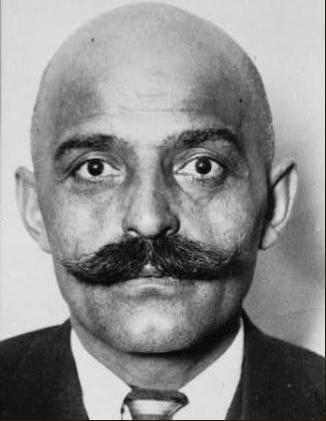

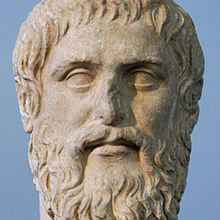
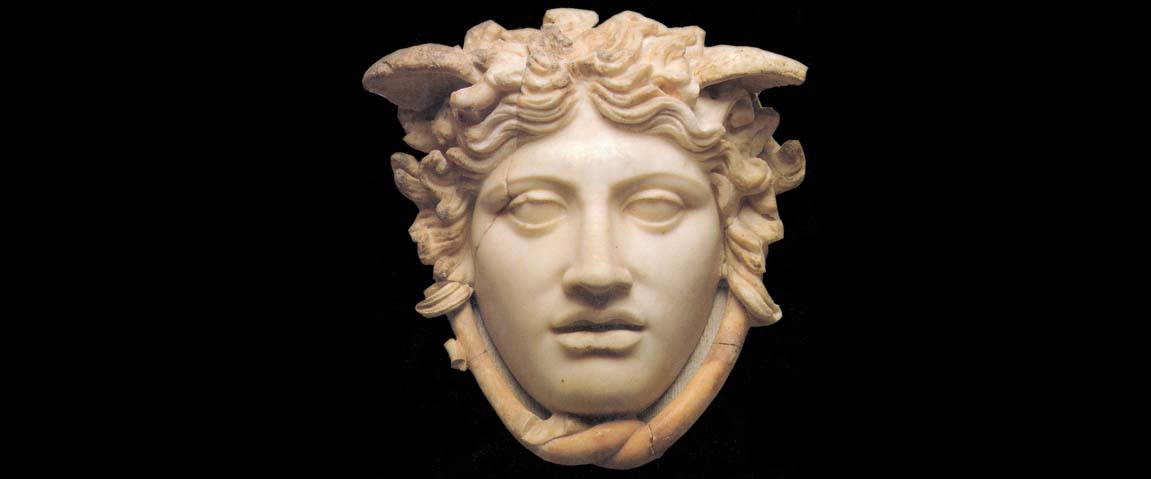
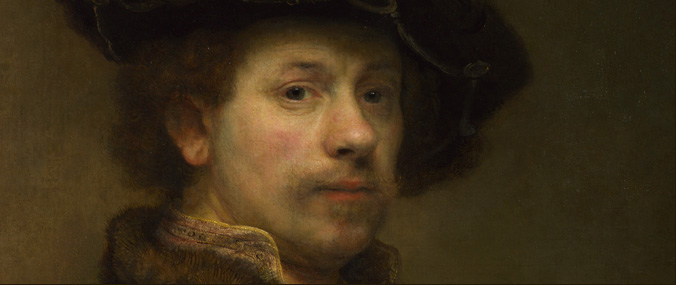





I’m not done yet but had to comment on the negative emotions aspect, as you have caused me to view that in a new light. In “On Consciousness,” Ouspensky doesn’t really make it clear that the absence of negative emotions that he considers so urgent is a result of the work. He rather treats it as a natural state of being. I mean, overall I disagree with excising negative emotions because they do have use to our survival. I think the ultimate goal should be control of the horse, not a hobbling of its speed, especially when on the run from bandits! However, I remember reading that section of “On Consciousness” and thinking Ouspensky unrealistic in his ideas. Your observation provided some much-needed insight into that piece. I may have to read it again, now with new eyes.
Jenny, it’s good to hear from you.
The non-expression of negative emotions is only a first step; it is not an end in itself. The basic idea is that if you do not curtail the expression of negative emotions to some extent, you will not have the energy to observe yourself. The non-expression is a tool for self-observation. The real work is learning to transform negative emotions and really any difficulties or suffering. Also just to note, people are different in essence. Some are cool and detached; others are emotional and passionate. Obviously the latter will have more difficulty with non-expression. But the cool and detached people have their own, different difficulties, so it all kind of works out in the wash.
In my mind Ouspensky was about as clear as you can be about negative emotion. This from the Fourth Way:
Q. But it seems to me there are circumstances that simply induce one to have negative emotions!
A. This is one of the worst illusions we have. We think that negative emotions are produced by circumstances, whereas all negative emotions are in us, inside us. This is a very important point. We always think our negative emotions are produced by the fault of other people or by the fault of circumstances. We always think that. Our negative emotions are in ourselves and are produced by ourselves. There is absolutely not a single unavoidable reason why somebody else’s action or some circumstance should produce a negative emotion in me. It is only my weakness. No negative emotion can be produced by external causes if we do not want it. We have negative emotions because we permit them, justify them, explain them by external causes, and in this way we do not struggle with them.
Thank you very much, William, for reminding us of this fundamental topic.
P.s. I wrote you en e-mail at willpage44@live.com, have you received it?
Thank you for writing this piece along with all of your other postings. It makes me at once appreciate your intelligence while also learning from your command of the work. After reading this piece, you seem to be on an ascending octave. There are many goals in the work, especially transforming impressions. Another is to deploy our will on the three centers simultaneously to connect the emotional center to the large accumulator. I understand that once this happens, there is a sort of time dilation. Once attained, self mastery stays permanently and transforming impressions is joyous and a child is reborn.
Nice story of the woman in the mental ward, but it seems the woman is not bipolar, but rather is a classic paranoid schizophrenic. And Haldol is or was standard treatment for this condition. If the woman were bipolar and in the manic phase she more likely would have been in the administrator´s office offering to buy the sanatorium or offering to treat the crazy people with a new therapy she has developed. The mania, which lasts usually for a number of weeks or more has the person convinced they have extraordinary powers and are invincible, and they often go about making very risky or downright crazy business decisions, and very often at the end of a manic episode the victim finds themselves in a lot of debt and this may aggravate the depressive episode that always follows the manic episode. . Thus the first line of treatment for bipolar disorder is to take away the check book and credit cards as soon as one detects the person is going manic. The classic treatment for bipolar is a lithium salt but I believe there are newer medications to help. I have know two people who were bipolar, and one was a girlfriend. One way her mania showed was that she was a know it all. For example, when she told me she was bipolar, I said yes, I know what that is, it is the same as manic depressive. NO! SHE EXCLAIMED, NOT THE SAME! Yeah, she was impossible. Actually, a bit crazy.
Hey, I have a story too of a crazy (this is the clinical term real doctors use) woman coming to a hospital.emergency room. She came in complaining of a plant growing out of here vagina. The ER crew thought her nuts (this is not an accepted clinical term, but doctors will use it nonetheless) and so sent her up to see the shrink. Well the psychiatrist listened carefully, and then decided that it would be better to err on the side of caution, and so he sent her back down to the ER to be physically examined. Well, it seems the woman was not entirely crazy. She indeed had a plant growing out of her. It was a potato plant that had grown from the potato she had put inside of herself some months before and then forgotten about. This story was told to me by a friend who worked for a medical news journal.
Frederick: The diagnosis was made by the ward Psychiatrist, who prescribed the drugs (Hadol). He also started the patient on lithium, but only after the manic phase had played out. If we begin to see bipolar as an engeritic disorder, then it becomes clear that there can be many different types of symptoms, depending on the character and personality of the patient.
A super effort is not just a super version of an effort using more energy. It is an effort that is not necessary for life, something that you do not have to do in your ordinary life to survive and manage.
This was great. Thanks
This was great. Thanks